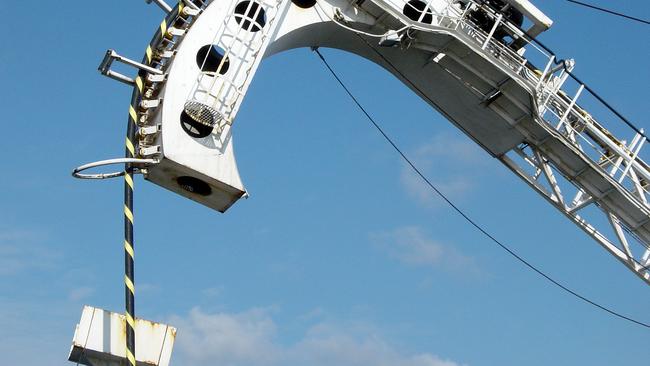Basslink owners put the business under after Tassie government presses compensation claims

The Singaporean owner of the Basslink cable connecting Victoria and Tasmania has put the business under rather than pay the $105.3m the state and Hydro Tasmania claim to be owed over the 2015 failure of the power and internet connection with the mainland.
Basslink is the only physical connector for power and internet services to Tasmania and, in addition to smoothing Tasmania’s own power grid, plays a role in stabilising the National Energy Market when power demand fluctuates in the summer months.
The cable’s owner, Singaporean-listed Keppel Infrastructure Trust (KIT), called in voluntary administrators on Friday after APA Group walked away from a potential acquisition of the undersea cable, with Basslink’s lenders appointing KPMG as receivers in the wake of the decision.
While the decision throws open the future of the ownership of the interconnector, Basslink chief executive Malcolm Eccles said there would be no disruption to power supplies to Tasmania.
“The Basslink Interconnector continues to operate efficiently and reliably, connecting Tasmania to the national electricity market. We continue to serve the communities of Tasmania and Victoria, providing a reliable and sustainable source of energy.”
KPMG’s Peter Gothard said in a statement that Basslink’s business “will continue to operate as usual and there will be no disruption to the operations of the interconnector or communications as a result of this appointment.”
According to an October disclosure to the Singapore exchange, KIT’s Australian subsidiaries owe its banking syndicate $625.8m, and a standstill agreement of its repayment expired in late October.
In a statement to the Singaporean exchange KIT – which booked earnings of $S295.3m ($299m) in the first nine months of the year – said its decision had also been triggered by letters of demand from state-owned Hydro Tasmania over about $58.6m the power provider says it is owed over the 2015 failure of the cable – a figure which Basslink disputes on the “basis and quantum”.
Basslink was also ordered to pay $46.7m to the Tasmanian government in December 2020 after arbitration over the line’s five-month outage, which caused major power supply issues in Tasmania as the state government was forced to ship in diesel generators to make up the power supply slack, and widespread outrage as internet services degraded to businesses and households.
Its parent company assured shareholders on Friday there was “no contractual recourse to KIT” for the Basslink debt.
The collapse comes after the failure of talks with APA Group over a deal to sell the interconnector, with the Singaporean company said to have set a $1bn asking price for the undersea cable and associated business.
But, despite talk of interest in Basslink from distressed asset buyers – including Kohlberg Kravis Roberts, Bain Capital and Oaktree Global Management – the Tasmanian government is unlikely to recover much from an asset sale as their claim ranks behind that of the baking syndicate.
The interconnector, which incorporates a 12-core fibre-optic telecoms cable, links the Victorian and Tasmanian electricity grids.
Most of its cash flow is generated from a 25-year term agreement with Hydro Tasmania. It is designed to protect Tasmania against the risk of drought-constrained energy shortages.
Basslink also faces the prospect of competition from a second interconnector, with TasNetworks still considering construction of a subsea line crossing the Bass Strait.
KIT on Friday appointed Adam Nikitins, Stewart McCallum and Colby O’Brien from EY as voluntary administrators, with lenders appointing KPMG’s Mr Gothard, Peter McCluskey and Brendan Richards as receivers and managers.
The cause of the 2015 failure of the line has been hotly disputed between Basslink, the Tasmanian government and Hydro Tasmania.
An initial review of the failure – commissioned by Basslink – came up with a “cause unknown” finding.
But subsequent investigations, carried out by engineering consultancy firm DNV GL on behalf of Hydro Tasmania, found the cable’s owner had been exceeding the subsea connector’s design limit causing operational stress that “probably” triggered the initial fault.



To join the conversation, please log in. Don't have an account? Register
Join the conversation, you are commenting as Logout